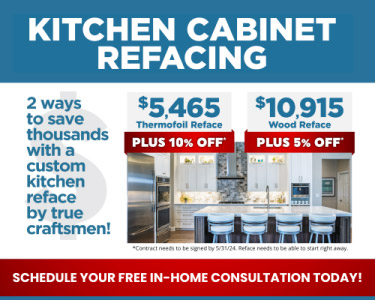Common Kitchen Remodeling Mistakes to Avoid
The kitchen is one of the most important rooms in your home. Not only does it serve as a place to store and prepare food, but it is usually one of the first rooms that guests and potential home buyers see. As such, careful consideration must be given to any remodeling project. A single design mistake can make your kitchen inefficient and difficult to use — which is the last thing you want for a space that relies so heavily on function. So, what should you look out for when planning your new kitchen? Below are three of the most common mistakes we see in kitchen design, and how you can avoid them.
Mistake #1: Ignoring the “Kitchen Triangle”
The most efficient kitchens are designed using the “kitchen triangle” principle. This involves placing the sink, stove, and refrigerator — the three most frequently used features of the kitchen — in a triangular layout to make them as easily accessible from one another as possible. Make sure your kitchen design will allow you to walk directly from one station to the other without obstruction. If you have an island, you’ll want to avoid having to walk around it every time you go from the stove to the refrigerator.
Mistake #2: Not Planning for Appliances
Don’t start your kitchen remodeling project before you’ve chosen your major appliances. Your contractor will need to know the measurements of your refrigerator, cooktop, dishwasher, and built-in microwave to ensure a proper fit with your cabinetry. If your cooktop isn’t level with the countertops, for example, the heat from the stove could damage the counter over time. For this reason and others, you should select your appliances before finalizing the measurements of your cabinets.
Mistake #3: Insufficient Lighting
Strong lighting is essential for cooking, cleaning, and other kitchen tasks. You need to be able to properly see what you’re doing when chopping food or using heat appliances. Consider installing task lights over your kitchen island and on the underside of your upper cabinets to give your countertops more light. In addition to task lighting, you’ll also want to consider ambient lighting — especially if you use your kitchen to entertain guests. A dimmer switch is a simple solution that allows you to have bright light when you need it and softer light when you’re relaxing after a meal.
Creating a functional, efficient kitchen requires proper planning and attention to detail. Thinking ahead will save you a lot of time, money, and grief over the long run. Be sure to avoid the mistakes listed above when designing your kitchen space.

